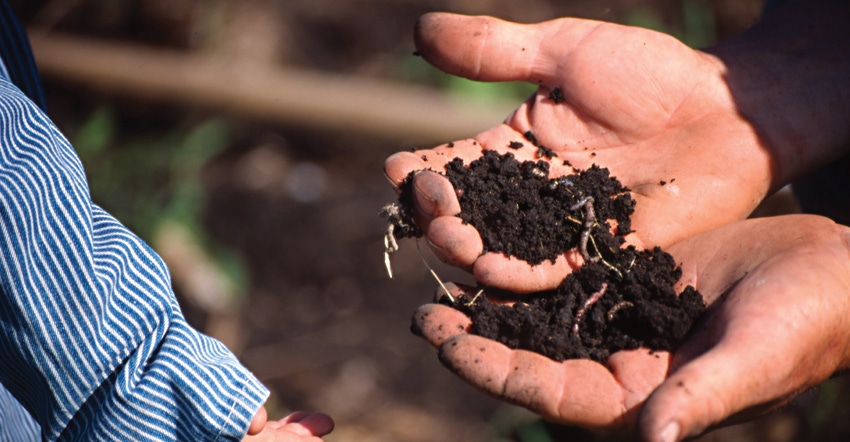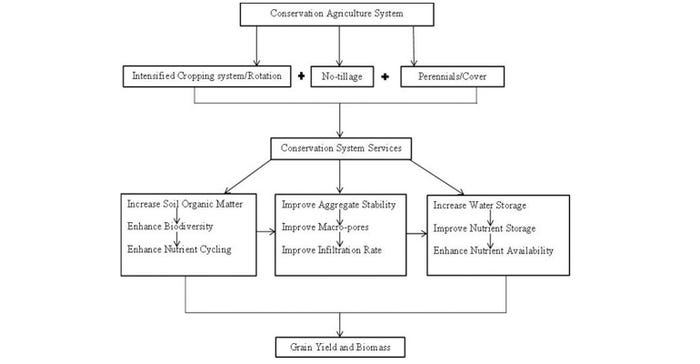June 6, 2017

By Mahdi Al-Kaisi
The term “economics of soil health” has been used frequently in an attempt to quantify and validate the value of improving soil health. The traditional thinking about assigning dollar values to soil health metrics, which are many, can be very challenging, and it is easier said than done.
One of the challenges in putting a dollar value on soil health is the improvement in soil health is a long-term process. Realizing an immediate economic return can defeat the purpose for those who are looking for a quick fix of the long-term sustainability of soil health and its cumulative effects on soil productivity.
It is imperative to view soil health economics in two ways: include the system role in reducing operational costs along with the system effects on improving the soil’s biological, physical and chemical attributes as main components of soil health metrics. These two benefits are mutually interconnected.
Practices improve soil health
The drivers for improving soil health are many, but we can name a few including the conservation systems illustrated in the chart below. These drivers are no-till, the use of cover crops, crop residue management, buffer strips, etc. Therefore, to quantify the economic value of improving soil health, the focus should be on the outcomes and impacts of these practices used in a system approach for return on investment (ROI).

It has been documented by many long-term studies that conservation systems such as no-till, strip till, cover crops, and filter strips (i.e., prairie strips) have significantly reduced input cost per acre and provided ecological services, such as the reduction in soil erosion and soil nutrient loss. In a long-term tillage and crop rotation study in Iowa, over 10 years of results suggest that input cost with conventional tillage for corn production was 7.5% and 5.7% greater than that with no-till and strip till, respectively.
In the meantime, no-till and strip till practices have been documented to have a greater impact on improving the soil health metrics of soil biology, soil water processing (i.e., infiltration rate), and the soil physical attributes of aggregate stability and water-holding capacity, to name a few.
Sustainability is profitable
Essential to soil health and crop productivity is a shift to a system that provides economic incentives in terms of change in the cost of operations, such as labor, fuel, machinery, chemicals, etc., yet provides ecological services reflected in the improvement of soil health metrics. This approach will potentially minimize risks during severe climate events (both dry and wet).
The link between different components of the system highlights the economic value of improving soil health through improvement in soil carbon sequestration and water quality. Thus, improving the soil ecological system, reducing input costs and stabilizing crop productivity by moderating the severe impact of climate variability events during a growing season are the best economic indicators for improving soil health with a lasting economic impact on sustaining a system’s productivity.
New thinking needed
New thinking needs to emerge to address the economic value of soil health by protecting and sustaining the soil system from any long-term degradation resulting from destructive and imbalanced management practices such as intensive tillage, which is the leading cause of soil and water quality degradation in the Midwest. This new thinking for soil health economics needs to be linked to the system effects on the ecological level. Furthermore, those who have been pioneering conservation systems for many decades need to be recognized in the agriculture marketplace, such as crop insurance.
To encourage the adoption of soil health practices, there needs to be a mechanism, which reflects the economic benefits or incentives of soil health by linking crop insurance rates, for example, to the improvement in soil health as currently advocated by some economists. It has been documented that conservation systems improve soil health and reduce input cost. Crop insurance can be used as a tool to provide incentive to encourage emerging adopters and existing practitioners of conservation systems to improve and sustain soil health and ROI.
Soil health is an indicator of system performance in rejuvenating and enhancing the soil’s ecological, environmental and economic services. Its economic value is an integral part of the system’s returns and benefits. In conclusion, the case for soil health economics has to be articulated in a system approach that reflects the mechanism by which we develop and maintain healthy soil as the foundation for a productive and sustainable agriculture.
Al-Kaisi is a professor in the agronomy department at Iowa State University. Contact him at [email protected].
You May Also Like




